Ayodhya 2.0: A Clean Up Task In Progress

A massive cleanup of Ayodhya is underway at all fronts inform officials - be it the widening of roads and open drains, mechanised cleaning of roads, setting up of SWM plants, door to door waste collection, a material recycle facility, installation of food decomposers, training the sanitation staff, installation of incinerators for disposing diapers among others.
"At least for the sake of these officers who guard the Ram Janma Bhoomi may the dispute be solved and the mandir be made once and for all" this remark by my mother four years ago describing the tension that gripped the entire area around the then 'disputed land', had haunted me until I landed in Ayodhya.
But as I strolled around the Ram Janma Bhoomi last week, I realised this is precisely what has changed. The guards are still there, but they aren't tensed; they are still keeping watch but not with their brows creased and their vigil heightened.
As we step out of the Ram Mandir precincts too, activity is slowly returning to normal post-Corona restrictions. While the security measures are in place, those wielding arms also have an air of relaxation around them.
‘Ab tanav kum ho gaya hai…kyunki ab ye ‘vivadit’ nahin rahi’ says an office seated at a make shift milk vendor stall. He has been deputed multiple times on Ram Janma Bhumi duty over the past three decades, he says, adding that it is the first time that things are normal, as the vendor pours him a glass of milk.
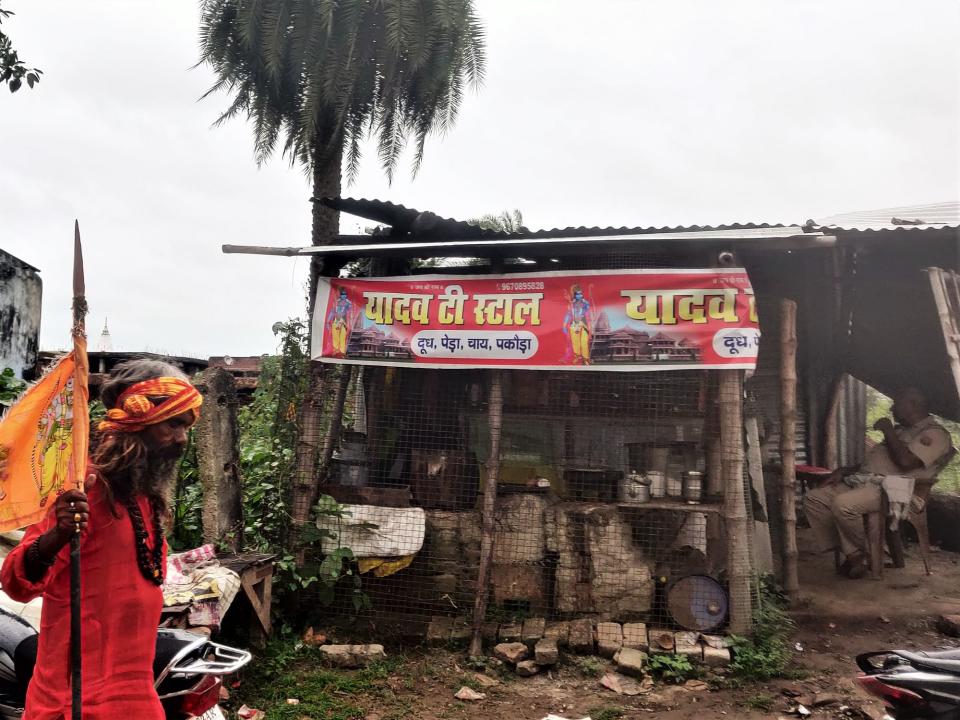
The vendor Brij Lal Yadav is among the many who are counting days for their means of earning to be razed to the ground. But he isn't complaining, for he says, his shop, a temporary tinned structure, is too small a price to be paying for the 'bhavya mandir' that is finally being made. "And so is development. Everything is changing for the good…Ram paidi bani hai, Sarayu ghat Bana hai…Vikas hua yahaan, aur ho raha hai” says Yadav.
As one walks past the bricks with the name of Shri Ram, which were kept by people from across the country, it is difficult to not hear their tales of those who gave their all for this battle for justice.
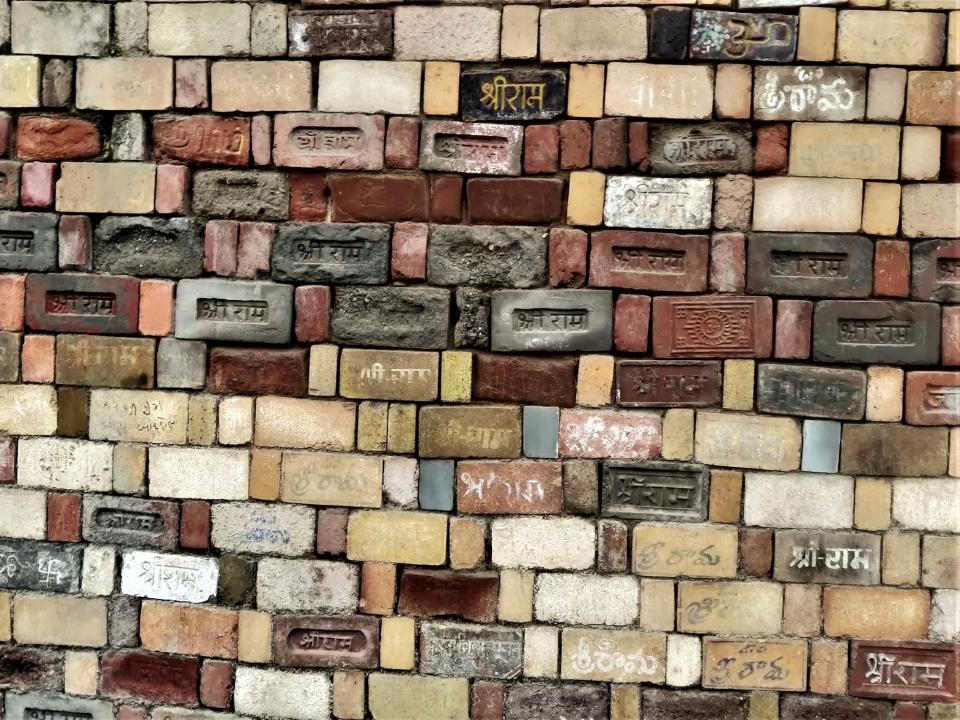
As one enters the Ram Janm Bhumi Nyas Workshop, one finds the gigantic bronze bell weighing 600 kg that travelled all the way from Rameshwaram in Tamil Nadu last year.
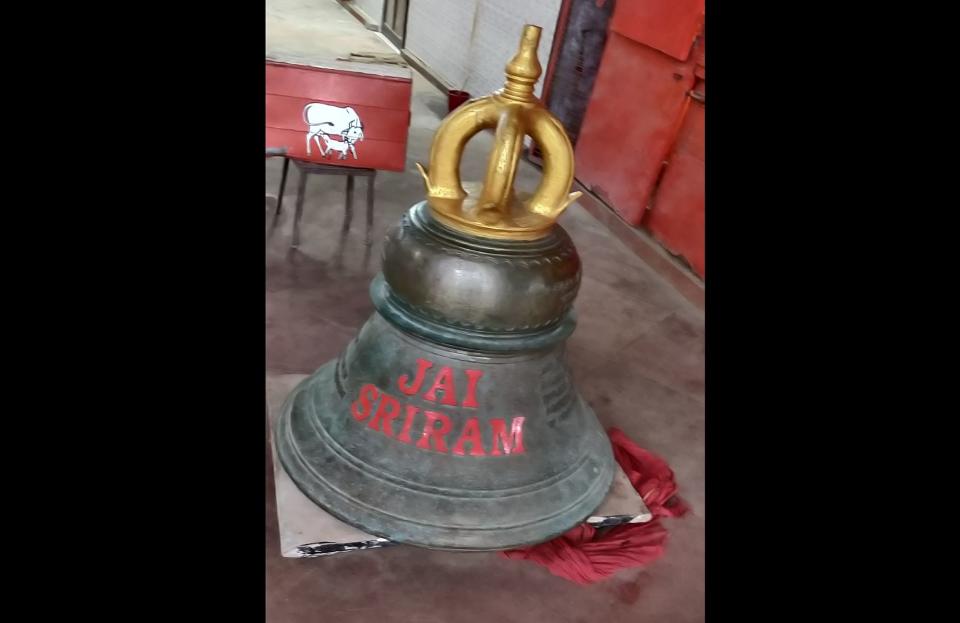
The workers from Rajasthan are back at the workshop and chipping away at what are to be the building blocks of this mammoth structure. The stones that have been carved earlier too are being polished and awaiting their turn to be a part of the temple.
A 'shaam panchi jotishi' bird fortune-teller at the exit of the street from the Mandir, who makes ten rupees every reading, assures us the future of Ayodhya is bright, even at the cost of 'destruction' that another vendor of bead strings tries to bring up. "When Ayodhya will look better, we will have greater tourists, which means all of us will earn better," says the Jothishi.
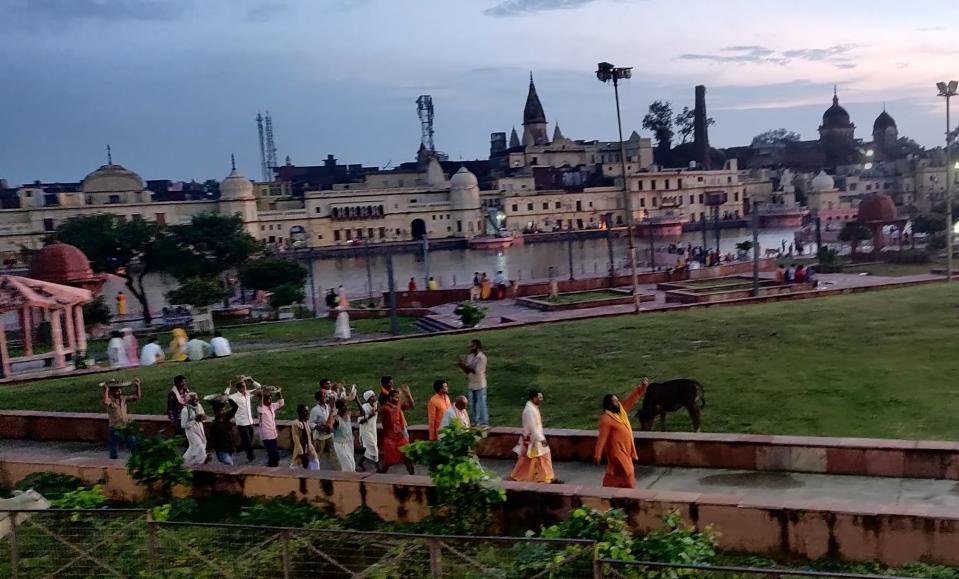
Thus motivated as we headed out to discover the 'vikas', we make our way to the Ram Ki Paidi, whose 'spectacular' view during Dasara last year had made headlines with images taking the virtual world by storm.
Landscaped to make space for various mini amphitheatre-like spaces, lawned gardens for people to sit and spend time, a bhajan space we are told which sees activity on festive days and the facade of the entire stretch of old buildings that will get a facelift - the entire space around Ram ki paidi has been revamped and is now being beautified along with the pump house and various kunds spread across the city.
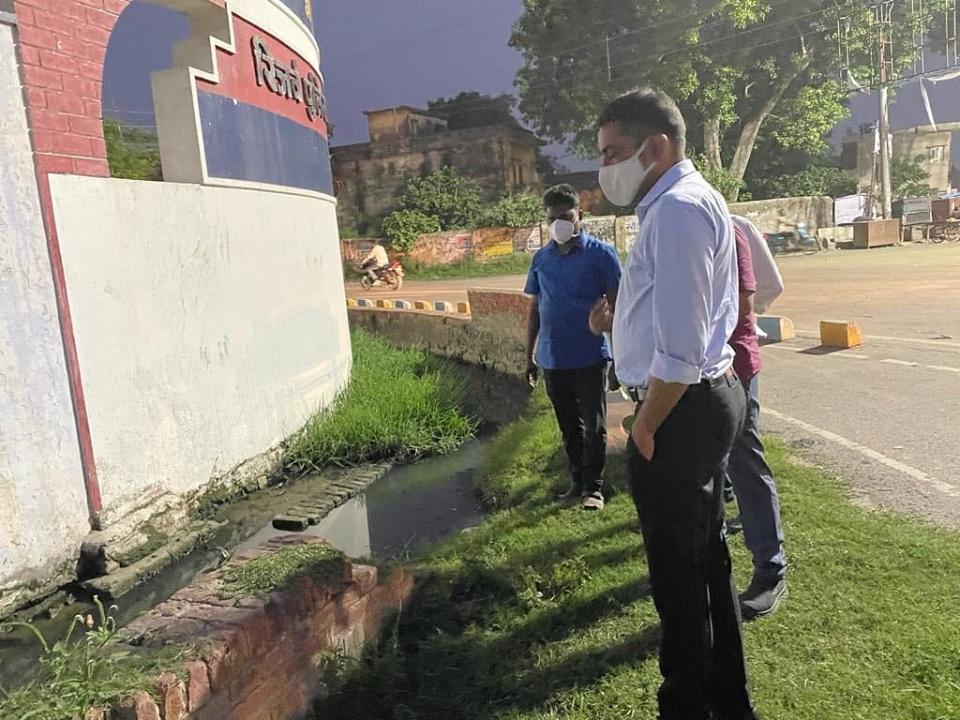
Eight out of the 108 kunds that were 'crowd discovered' through an interesting hashtag campaign 'kahaan hai mera talaab' and 'Aao bachalo pani' which saw citizens spot lakes, ponds and other water bodies in their vicinity and share them with the administration.
These kunds, many of which had turned into swamps, had encroachments, and neglected for ages, were cleared and cleaned and an effort was made to get 'people who had turned their back to the kunds to make them the waterfront' says Community Friendly Movement's Secretary Saurav Ghosh, who is working with the ADA to resurrect the waterbodies.
"Elsewhere in the world, people have houses that are waterfront; here we have people turning their backs to the sources of water owing to the dirt, the stench and the like. So the key thought was to make the back the new front, to engage people in this process and to ensure they take responsibility for their upkeep," he explained.
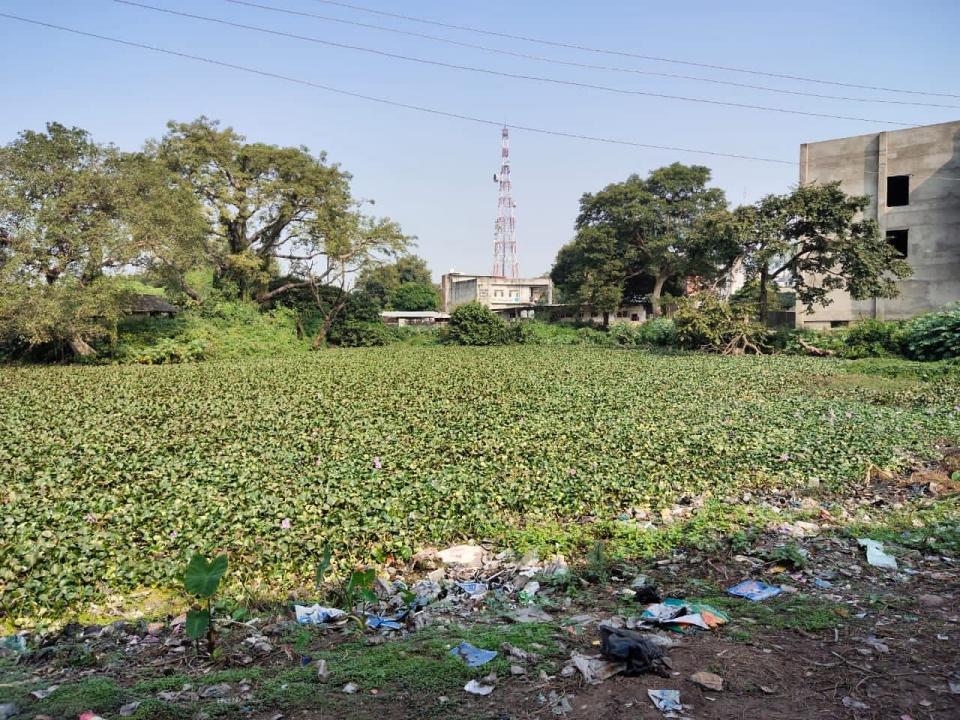
Three core aspects on which work is happening, as he elucidated, are
1) Clearing encroachments and creating a minimalistic design around these kunds where people can visit and spend time at
2) Water quality improvement
3) Community engagement
To begin with community engagement, Ghosh explains how a Facebook hashtag campaign took the town and its youth by storm and received a massive response, to the extent that more than 180 water bodies were 'discovered' by citizens when the quest was for just the 108 kunds.
"The idea was to engage them right from the beginning and not after the process is complete. And since we weren't dependent on govt funds, but CSR ones, we had a relatively free hand and could go ahead with the creation of a model, started the hashtag campaign and though it took some time to catch up, the involvement was unpredicted". The responses that poured in ranged from ponds spotted to encroachment details to leaking taps to be filled to landfills.
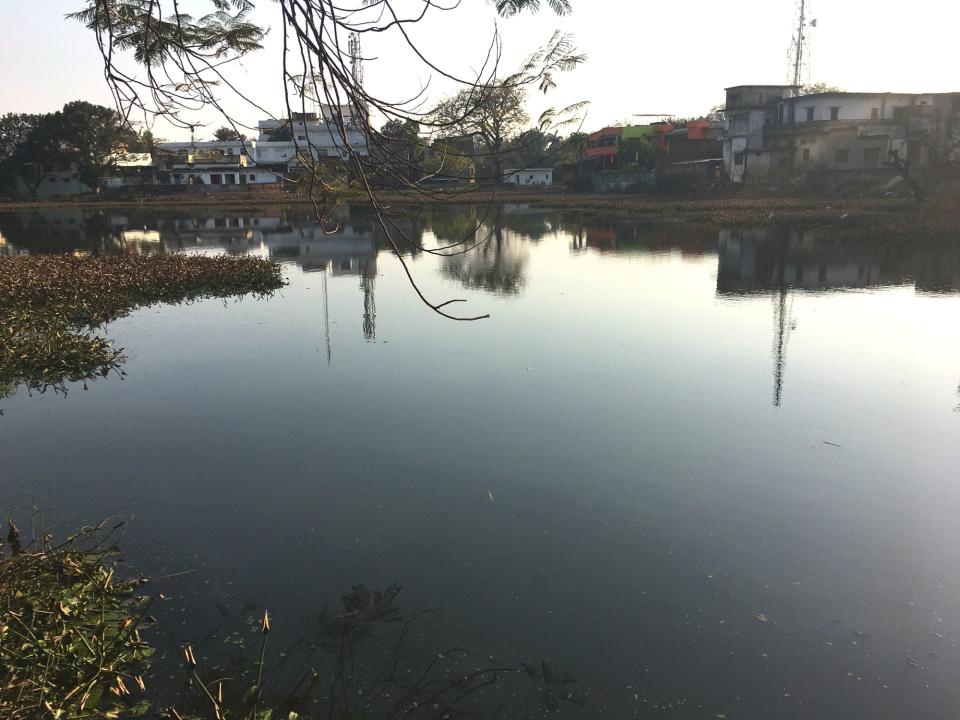
"This model isn't new, but an adaptation of what Ram himself did for Ayodhya. "Until the time of Dasharath, the model of governance of the Ikshvaku clan was that the king stayed in the town centre and the citizens in villages. But Ram got raja and praja together and these 108 kunds of that era were created as life flourished around the source of water," explains Ghosh, adding that this is precisely the model that they seek to replicate.
"Development can't be just about tourism, hospitality can't be just about hotels that seek staff which can be seen as employment. Our focus is on creating infrastructure that created more organic local employment opportunities," explains Ghosh, as he shares the plan for the development of the kunds. 'We need to create local employment, so the plan is to have a priest (maybe trained at a Sanskrit college here) who handles the rituals at the talab while also ensuring its sanctity is maintained.
People had a deep apathy for water and that is what we are trying to correct and connect in this whole process. We are getting people back and thinking of entrepreneurial opportunities for people to work, he says, elucidating that the focus is on enhancing the quality of life by improving education, water quality, sewage management, aspirational works that make Ayodhya a destination for various sectors to set up base here.
On the cleanup front too, the ADA has taken to traditional approaches of cleaning the sources of water and ensuring they stay that way. "Unlike western models that look at water as just a chemical composition, our Vedic way looks at water being alive. And there were people who were working on purification models from this approach, who we got in touch with, asked them to do a few proof of concepts for us" he elaborates, on how they then worked on the Lalji talab that used to receive the sewage water of the city, which would then be pumped straight into 'Sarayuji'.
Work then began on infusing the herbal concentrate - a 1000 arka botanical extracts - and treating the water, which then served as a case study that was sent to the NMCG while also encouraging youth to be part of the efforts. This has now been expanded and work is on for the cleanup of at least eight kunds before the Deepotsav.
Another massive operation in this regard has been the cleanup of the Sita Jheel, which until a few months ago looked like nothing more than an expansive spread of garbage. A site visit through the entire stretch of the lake up to the point where the cleanup has been initiated gives one a sense of the scale of activity that the space will see in the coming few weeks.

The Warrior 1200, a massive waste segregation machine, has been put in place by the agency handling the cleanup. JCB's are seen continuously feeding this monster of a machine that then separates the waste into three portions - one that can be turned into manure completely - the good earth part, one that can be used to fill low lying areas as debris, and one that can be used in cement factories. The machine has been at work for the past 20 days, informs project manager Yogesh Rana as he demonstrates its working.
"For over two to three decades people have dumped waste here. We have excavated and cleared almost 2 acres of land and research says it is almost 33 years old. Chemicals have been sprayed to avoid the stench from the pileup," explains Rana.
How 68k tonnes of waste is being segregated at the Sita Jheel in #ayodhya by this #Warrior1200 !https://t.co/xNAwyrF4Kb
— Harsha Bhat (@bhatinmaai) September 27, 2021
"The schedule plan is to run it for 14-15 hours a day, subject to the weather conditions. The machine handles 80 to 100 tonne of waste per hour with total waste as of now being 68,000 ton. Although the cost comes upto 500-600 per tonne we are doing it at Rs 444 per tonne which is the the government rate. But this was our first project in UP and had the name of Ayodhya associated with it, so we have taken this up as a pilot project here," he adds.
Assistant Municipal Commissioner Ankita Shukla, who has been 'on the ground' meeting people wading through water, said "even after a week of my initial visit seems to not be receding, it's indeed a mammoth task to cleanup Ayodhya, but change is visible."
"The key issue is that Ayodhya Nagar Nigam itself is at a nascent stage and we are trying our best to reach a point where we have in house team of experts to understand these core issues. Meanwhile, in the run up to the Deepotsav, DPRs have been prepared for the open drains as well as the roads, which have been presented to the administration and await sanction," she explains.
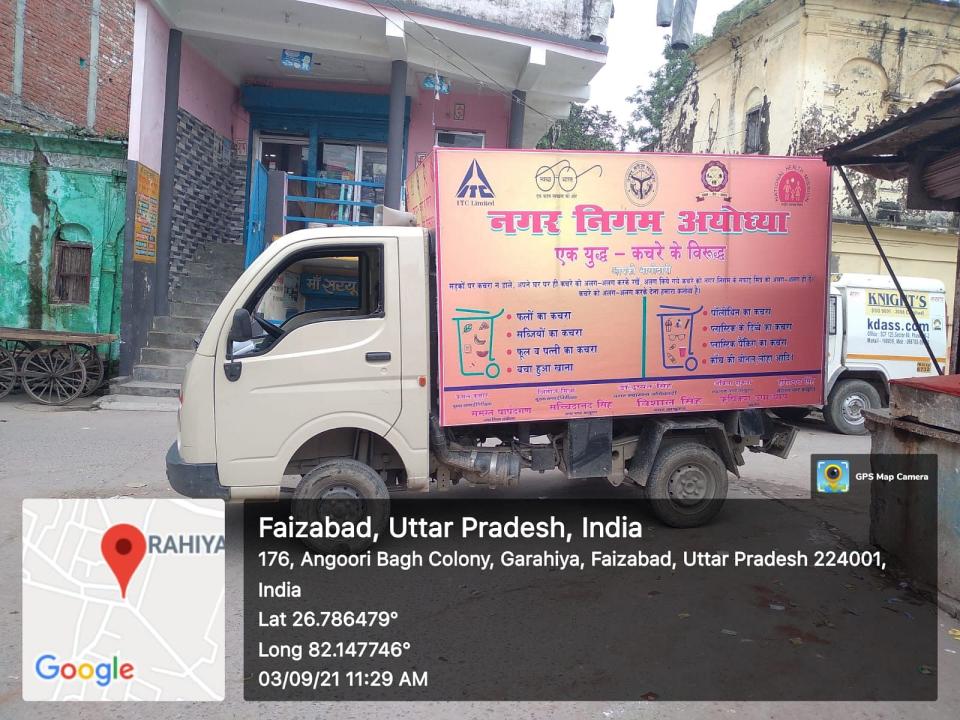
"But the tasks like door-to-door waste collection has been in place in some areas and we are looking forward to extend them. Recently, a tender has also been issued for mechanised sweeping, road cleaning and door to door, and mechanised toilet cleaning. Also, currently we have only 29 km of road suitable for mechanised sweeping, since we don't have such big roads at present."
"A solid waste management plant has also been planned, with the land finalised at Sohawal tehsil. The DPR is now at the headquarters in Lucknow for verification, and we shall soon see the plant being put in place," adds Shukla.
"Although the rejuvenation of Kunds are being handled by ADA, some ponds like the Ksheer sagar, the Lalbagh ka talab, the Chanaura ka talab, we cleaned up pre-monsoons. We also had the encroachments cleared up, which was a huge step taken by the Municipal Commissioner so we could enhance their capacity," she explains.
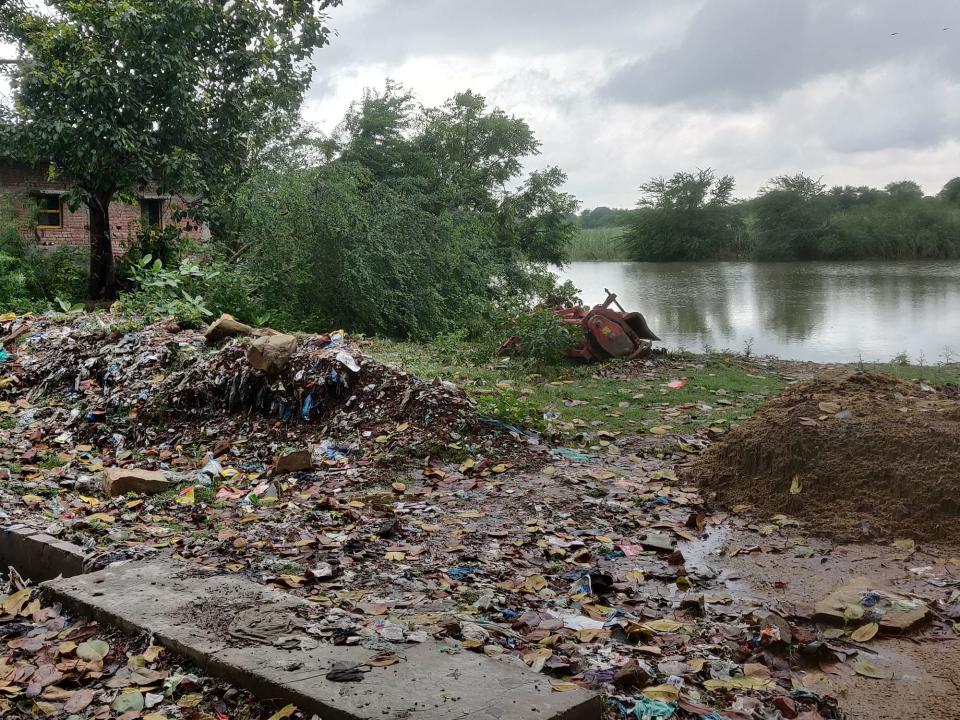
"Material recycle facility with a 10-tonne capacity has been set up where the dry waste, wet waste and organic waste is being segregated. ITC has provided food decomposers as well as has done a handholding and training session for our sanitation staff, and we are also ensuring the temple organic waste is processed to produce incense sticks - something the Municipal Commissioner has also initiated in Kashi where he served as the CEO of the Kashi Corridor project", she elaborates.

From installing incinerators for diapers and other hazardous wastes, creating mohalla committees that then ensure source segregation and also put in place a community composting system, and creating 'civic sense through IEC - information, education, communication', installing a litter picker machine that is set to task regularly as well as surfing special VIP movements, 'we are doing whatever we can to ensure we are on track to become the global spiritual capital', says Shukla as she signs off.
Fingers crossed, we say.

 Yahoo Finance
Yahoo Finance